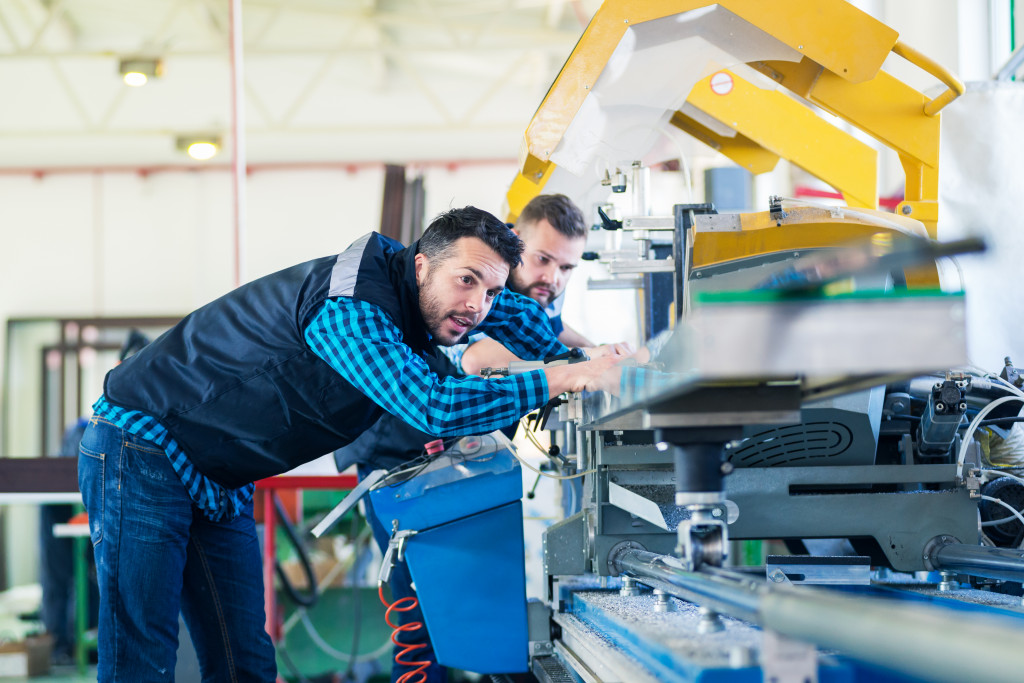As a business owner, it’s your responsibility to ensure that your manufacturing plant is running efficiently with the proper tools and equipment. To ensure that you get the most out of what you have, it’s essential to practice regular maintenance on your plant’s tools and equipment. Doing so will help to maximize their longevity, which in turn will save you money in the long run. Here are a few tips for keeping your tools and equipment in tip-top shape:
Keep things clean
Keeping your tools and equipment clean is essential as this can help them last longer by preventing dirt from building up over time. For example, using compressed air to blow off dust particles from hand tools like pliers or wrenches can help prevent corrosion over time.
Additionally, regularly lubricating moving parts can help keep things running smoothly while preventing dirt buildup. Remember not to use too much lubricant, which could damage some components. It’s also beneficial to wash down large machinery after each use or every few weeks if used often. This helps prevent dust accumulation and further helps extend its life expectancy.
Inspect regularly
It’s essential to inspect tools and equipment regularly. This can be done either visually or with a more specialized inspection plan, depending on the type of tool or piece of equipment you’re dealing with. During these inspections, look for signs of wear, such as rusting parts, frayed cables, cracks or chips in metal surfaces, missing parts, etc. If any of these items are found during an inspection process, it’s important to address them immediately before they become bigger problems down the road.
Another vital thing to remember is that not all tools and equipment have the same life expectancy, so it’s essential to know when it’s time to replace something. For example, frequently used tools should be replaced more often than those that get less use (for instance, a spare wrench in the toolbox vs. the wrench used every day to tighten a bolt). Additionally, tools that see a lot of wear and tear should be replaced more regularly than those that don’t.
Use the right tools and hire the right people for repairs
When working with tools, equipment, and other systems in your manufacturing plant, it’s essential to always use quality products that are designed specifically for the job at hand. For example, if you think there’s something wrong with your valves, you’ll need the right valve testing equipment to perform safety relief valve diagnostics. This will help you ensure everything is working correctly while preventing damage and wear down the road.
In addition, when your tools or equipment need repairs or replacement parts, it’s essential to hire skilled professionals with experience working with specific types of machinery. Doing so will help minimize downtime in your manufacturing plant and ensure that your tools and equipment are always in top condition.
Stay organized

Regularly organizing your shop floor can also help extend tool/equipment life expectancy by reducing clutter and preventing items from being stepped on or knocked over accidentally by workers walking through the space.
Consider using labeled shelving units for smaller parts like screws and nails so they don’t get mixed up or lost. If you don’t have shelving units, you can build your own with plywood and metal brackets. Just make sure to label them clearly so everyone on your team can easily find the right tools and equipment they need to complete their work.
You should also invest in storage bins for more oversized items like wrenches and hammers. And if you need more effective storage solutions, consider installing a tool rack or cabinet in your manufacturing plant to keep everything organized and easy to access. Or, rent out a nearby storage facility if you don’t have the space to store these items on your own.
And don’t forget to ensure electrical cords are correctly organized so they don’t trip anyone up while they’re working. Electrical hazards are also a significant cause of tool and equipment damage, so be sure to keep things like extension cords out of the way when possible.
Proper maintenance of your manufacturing plant’s tools and equipment will save you time and money in the long run by helping them last longer than they would have without regular care. Inspecting regularly for signs of wear, keeping things clean inside and out, using the right tools and hiring the right people for repairs, and staying organized are all great ways to maximize their longevity. By following these tips, you’ll be able to keep costs down while ensuring that everything runs smoothly at your manufacturing plant.

